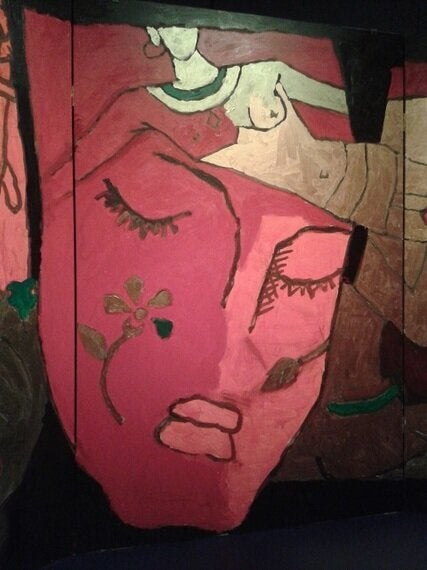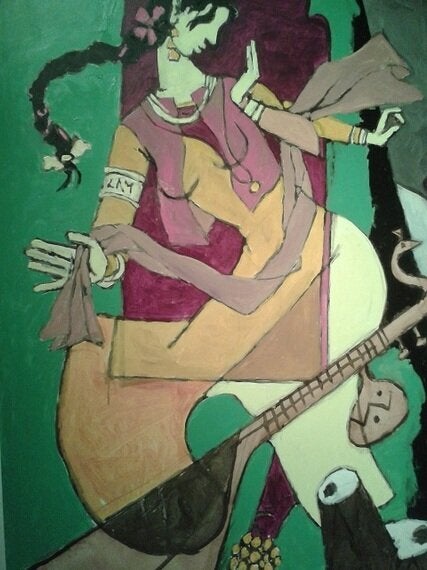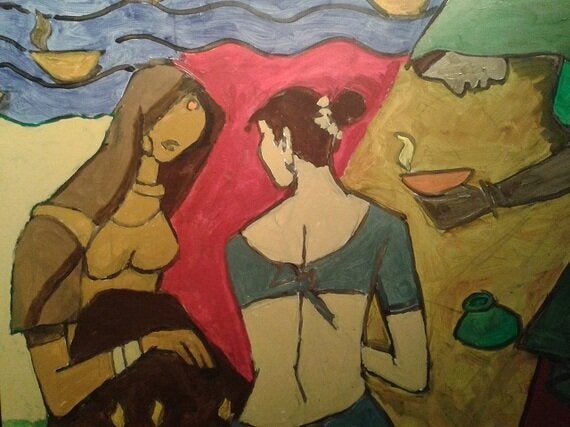
Maqbool Fida Husain, mourned in India as a "national loss" after his death in 2011, is supposed to have died in "self-imposed exile" in London - as the media likes to put it. Yet, it is ridiculous to call it "self-imposed" exile. He lived outside of India because back in the country where he was born and where he grew up, he lived in fear of his life. He received regular death threats for offending religious feelings, for making paintings with themes from Hindu religion that were apparently profane because they depicted nudity and eroticism.

I am afraid of religion. I am afraid of it because instead of having strong feelings against violence, hatred, or crimes against humanity, religion finds problems in words, paintings, cartoons, clothes, and poetry. It takes exception to what someone said, what a musician conveyed through their lyrics, what a writer wrote in their novel.
M. F. Husain died at the age of 96. He died in exile because he was famous for all the wrong things. Famous for his snow-white hair and beard, for his adoration of Madhuri Dixit (Bollywood's own dancing-queen), for his use of religious themes and iconography in art. In the forties and fifties, when intellectuals and artists in India were still grappling with a new independence from colonial rule, and professing national sentiments, Husain was part of a group of artists trying to establish the Indian avant-garde. These were artists that spoke against communal tension and violence between ethnic groups. Despite these pacific sentiments, his art and films always seemed to cause scandal. If they didn't offend Hindus for depicting eroticism in religious iconography, they caused problems with Muslim groups complaining about the apparent blasphemy in songs that appeared in his films. He offended practically everyone by his love for Madhuri Dixit.

I went to the press-view of eight of his triptychs at the Victoria and Albert Museum yesterday. These were the last of his works, commissioned in 2008 by Usha Mittal, paintings that he was still working on when he died. In one triptych Language of Stone, Husain repeats the words of Rabindranath Tagore - How the language of stone surpasses the languages of man. It pays tribute to the stone sculptures of Ajanta and Ellora, and Khajuraho. Indian Households shows a range of people in India, from a variety of ethnic groups and classes, going about their daily lives, reading the newspaper, smoking a nostalgic hukkah, spending time with the family. While Hindu Triad triptych brings Brahma (the creator), Vishnu (the preserver) and Mahesh (the destroyer) to life in vivid red, Indian Dance Forms shows a willowy Madhuri Dixit dancing Kathak, a panel of Uday Shankar's ballet Kalpana, and one of a dancer in full Kathakali costume. Panels written in Husain's own handwriting give us tasty little morsel of detail to go with each work.

Instead of seeing anything scandalous or profane, I saw art that took my breath away. Enormous, full of abiding colour and a painfully-rich imagination, the paintings show not just the political and artistic history of India, but they also somehow manage to help you see religion in a new light. They show that religion can be about dance, symbols, myths and stories, not just about dogma and hatred. They show that a self-taught artist who originally painted cinema hoardings can use cubist-inspired methods to bring history and culture to life.
The exhibition is at the Victoria and Albert, 28 May - 27 July, 2014. Free entry.